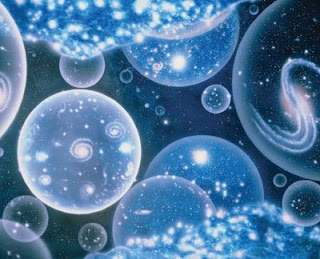The greatest myth in Human history
Consider the following facts:
Consider the following facts:
A path to to attain realization of the divinity that binds this entire universe based on self retrospection, revealed knowledge that is pure and given to mankind at the dawn of creation encompassing ways for all sorts of people at all times, code of conduct that imbibes truth and non-violence towards all living beings, freedom to interpret scriptures in accordance with one's inward experiences, all aspects of living including food, behaviour, worship leading us towards divinity.
A religion which is spiritually retarded, had to massacre millions of innocent lives for its survival, believes in a 'loving' god who sends his so-called children to eternal hell for a mere non-issue of not accepting a person's words(or authority), has a 'scripture' which was carefully edited out from numerous available books in order to gain mass support, does not talk about healthy food habits for its adherents, has revealed scriptures which is less than 2000 years old(while humans have been living on this planet for millions of years), persecutes anyone holding a slightly different view from supposed authority.
A third religion which has the same characteristics as the above except that its violence is several times larger than this second one. A religion whose founder himself massacred hundreds of innocent people to make others bow down to his authority. A religion whose paradise is nothing but a x-rated parlour, known for the worst disrespect of its women folk.
Another religion which holds the view that all of existence is just an illusion and void is the ultimate truth.
Though the above is a black and white picture of different world faiths, it is obvious for any sane person that give or take a few, that these are NOT the same in many aspects.
I am getting down to the topic of 'Radical universalism' or the statement "All religions are the same" that has plagued India severely for more than 150 years now.
There is a pithy anecdote of a hindu parents' dilemma. The parents had apparently been teaching their child that all religions are the same(similar to all rivers leading to the ocean blah blah..). After a few years at school, the boy came and told his parents that he wanted to be a christian from then on and not follow the vedic path. They were devastated and asked for the reason. Prompt was the reply "All religions are the same. So i can follow anyone of them and I want to try the others now"
(Note: The word hindu is a very misleading one and has very little meaning in the traditional context. There was no such word or idea in India before a few centuries. I am however using that word to denote a broad umbrella under which we gather the belief systems that trace their way back to vedas, though it might not be a genuine connection many a times. At this point it is good to remember that 'hindu' does not indicate any homogenous group and consists of extremely diverse systems. These also do not qualify for the statement " all paths are the same" )
This is the sort of stupidity that we are leading ourselves into after all these years of wisdom from our ancestors. In the words of a blogger who writes about christian tyranny in India,
"Christian missionaries have spread death and destruction to native non christian peoples and cultures. Christianity is evil, diabolic and the cause of holocaust and god knows what else is to come. If hindus do not wake up.. the genocide Christian religion will carry out its agenda in india also as it has elsewhere with great gusto."
These people have destroyed our culture as much as the muslims have done in the last 1000 years and hindus still think it is wisdom to call every religion and idea same??? Does it have any iota of sense in it.?
The writings of Frank Morales on this myth are a great treasure to analyse this absurd notion prevalent in Hindu society these days.
The theory of radical universalism that "all the religions are same" is nowhere to be found in any hindu scripture or taught by any acharya until coupe of centuries ago. Also, the theory defeats itself. This neo-hinduism is allegedly the only religion that claims that all religions are same(and no one else accepts this stand). So, Hinduism knows this particular fact that the other religions do not know. So, Hinduism is superior to others!!! This self-defeating logic is the result of ill-informed present day teachers who do not have any formal training in vedic texts whatsoever.
Also, by stating that all religions are the same, we commit the blunder of equating the moral and ethical systems of all these religions. While it is well-known that Hindus are asked to abstain from meat(atleast beef) if they want to live a saatvic life and attain freedom from birth and death, there is no such restraint in the other abrahamic religions. Killing people who do not follow your religion is not immoral in Abrahamic religions. This has directly resulted in world wide massacres.
Rebirth and karma are some of the most profound and beautiful messages of vedas and sanathana dharma. This perfectly explains why there are inequalities at birth among living beings and why bad things happen to good people. Spiritually retarded concepts like one person's death to save whole humanity, eternal hell for not following this person, only one life given to judge a soul(and that too gets a birth in a particular family by random chance?) are all embedded in christianity. Isn't it ridiculous on the part of a vedic person to call all these systems as same?
Let us come to the most common myth taught in schools and by ignorant people. All paths lead to the same goal ultimately. I think this is the climax of the whole absurdity. Frank writes,
"The Christian's sole aim in salvation is to be raised physically from the dead on the eschatological day of judgement and to find himself/herself with jesus in heaven, who is to be found seated at the right hand of the anthropomorphic male father/god of the old and the new testament. Muslims aspire towards a delightfully earthy paradise in which 72 houris(or virgin youth) will be granted to them to enjoy. Jains are seeking kevala or 'aloneness', in which they will enjoy an eternal existence of omniscience and omnipotence without the unwanted intrusion of a god, a brahman or an allah. Buddhists seek to have all transitory elements that produce a illusion of the self melt away and to have themselves in turn melt away into the nihilism of nirvana. To the buddhist brahman also is an illusion.
Each of these different type of religion has its own categorically unique concept of salvation and of the absolute towards which they aspire. Each concept is irreconcilable with the others. To state the situation unequivocally if a christian, muslim, jain or buddhist upon achieving their distinct notion of salvation were to find themselves instead united with brahman, they would most likely be quite upset and confused indeed. And they would have a right to be! Conversely the yogi would probably be quite bewildered upon finding 72 virgins waiting for him upon achieving moksham rather than realising the eternal bliss of brahman. One person's vision of salvation is another person's idea of hell"
It is quite clear that each one's goal is different. Radical universalism as expressed by modern non-traditional hindus would seek to deny the members of other religions the right to assert their own religions as unique and distinct traditions. Radical universalism would seek to deny non-radical universalists the right to believe in an absolute that is categorically not brahman. Regardless of how radically different the goal of any other religion might be, whether that goal is nirvana, allah or any other, followers of other religions are told that they are all really aiming at the decidedly hindu goal of brahman- whether they know this or not and whether they want brahman or not. This is termed tolerant intolerance. One of the key aspects of right to freedom of speech is the right to be able to disagree. However by imposing one god, one path, one world-view radical universalism denies these religions and their followers their uniqueness and dignity.
When anyone makes this unthinking claim "all religions are the same", they are betraying the grandeur and integrity of our great heritage and dharma that has so many unique contributions to its credit to the world(yoga, ayurveda, karma, rebirth, yagnya, mantras to name a few). To deny the uniqueness and greatness of hinduism leads to a very unhealthy psychological state of self-loathing, a sense of unworthiness and a schizophrenic confusion on the part of anyone who wishes to consider themselves hindu. This muddled up state is often the reason why hindu parents often find their children less interested in hinduism and in some cases embracing other seemingly more rational and self-abnegating faiths. Who after all wants to follow a religion in which it is claimed that the very basis of the religion is to exult the greatness of other religions at its own expense? NO ONE.
If we want this tradition that has survived for millions of years to stay and illuminate the world during this vicious age of kali, we need to really understand the core distinguishing concepts of sanathana dharma and explain to whoever asks us about it instead of repeating the ill informed ad absurdum statement "all religions are the same".
PS: Though there are serious issues with medieval practices like sati, dowry system and uncalled for inclusions in varna system practice, it is well beyond any doubt that the core ideals of vedas are all-encompassing, noble and esoteric. This is quite not true with all religions where politicians and other power-hungry people have often decided the core policies to be followed and dictated the bloody actions that have been witnessed in world history. One good example is Constantine of Eastern Roman Empire.
PS: Though there are serious issues with medieval practices like sati, dowry system and uncalled for inclusions in varna system practice, it is well beyond any doubt that the core ideals of vedas are all-encompassing, noble and esoteric. This is quite not true with all religions where politicians and other power-hungry people have often decided the core policies to be followed and dictated the bloody actions that have been witnessed in world history. One good example is Constantine of Eastern Roman Empire.










